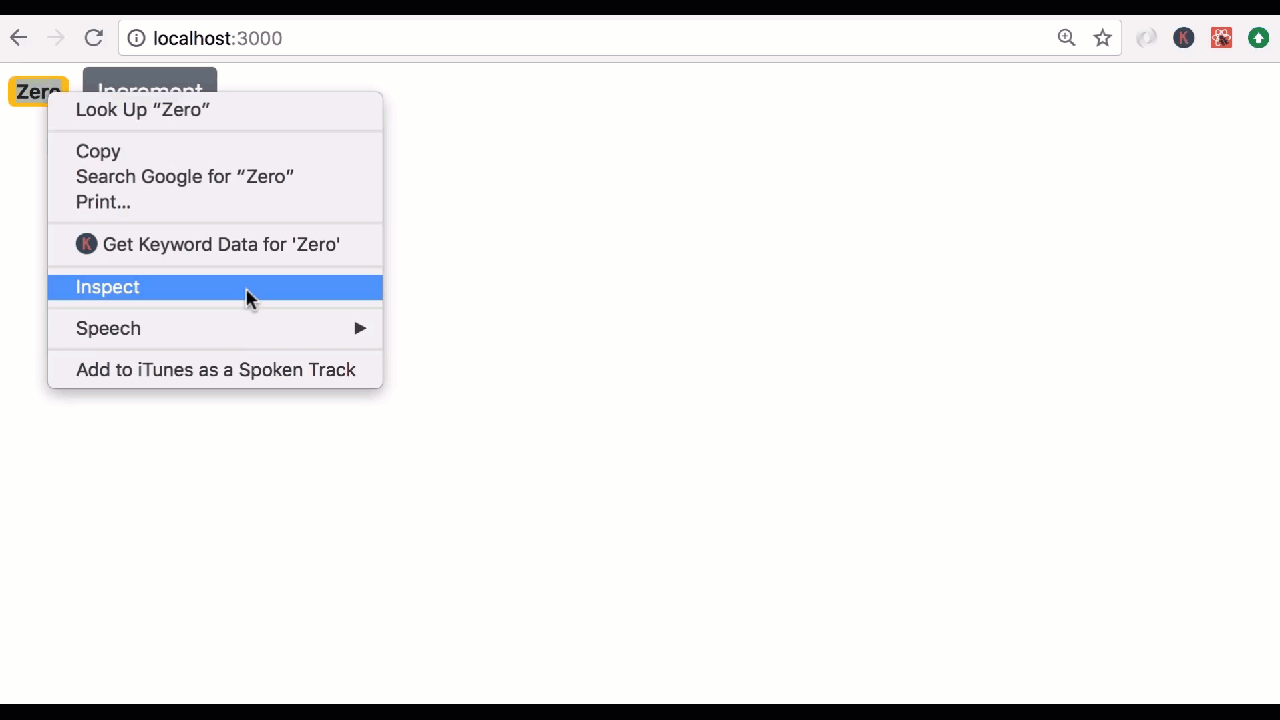Build a user interface with React
ECA React - November 28th 2018
Reference: https://codewithmosh.com/
Last time...

-
Modules
-
React, Virtual DOM, JSX
-
Create-react-app Webpack, Babel...
-
Components
Let's continue !
Rendering classes dynamically
class PokeCounter extends Component {
state = {
count: 1
};
formatCount() {
return this.state.count === 0 ? "Zero" : this.state.count;
}
getBadgesClasses() {
let classes = "badge m-2 badge-";
classes += this.state.count === 0 ? "warning" : "primary";
return classes;
}
render() {
return (
<React.Fragment>
<span className={this.getBadgesClasses()}>{this.formatCount()}</span>
<button className="btn btn-secondary btn-sm">Increment</button>
</React.Fragment>
);
}
}
Rendering lists
class PokeCounter extends Component {
state = {
tags: ["tag1", "tag2", "tag3"]
};
render() {
return (
<React.Fragment>
<ul>
{this.state.tags.map(tag => (
<li key={tag}>{tag}</li>
))}
</ul>
</React.Fragment>
);
}
}Conditional rendering
class PokeCounter extends Component {
state = {
tags: ["tag1", "tag2", "tag3"]
};
renderTags() {
if (this.state.tags.length === 0) {
return <h1>No element to be rendered</h1>;
}
return (
<ul>
{this.state.tags.map(tag => (
<li key={tag}>{tag}</li>
))}
</ul>
);
}
render() {
return (
<React.Fragment>
{this.state.tags.length === 0 && "Please create a new tag"}
{this.renderTags()}
</React.Fragment>
);
}
}Handling Events
class PokeCounter extends Component {
state = {
count: 1
};
/** [...] */
incrementCount() {
console.log("Incremented");
};
render() {
return (
<React.Fragment>
<span className={this.getBadgesClasses()}>{this.formatCount()}</span>
<button onClick={this.incrementCount}
className="btn btn-secondary btn-sm">Increment</button>
</React.Fragment>
);
}
}class PokeCounter extends Component {
state = {
count: 1
};
/** [...] */
incrementCount = () => {
this.setState({ count: this.state.count + 1 });
};
render() {
return (
<React.Fragment>
<span className={this.getBadgesClasses()}>{this.formatCount()}</span>
<button onClick={this.incrementCount}
className="btn btn-secondary btn-sm">Increment</button>
</React.Fragment>
);
}
}What happens when State Changes ?

Passing event arguments
class PokeCounter extends Component {
state = {
count: 1
};
/** [...] */
incrementCount = (pokeball) => {
console.log(pokeball);
this.setState({ count: this.state.count + 1 });
};
render() {
return (
<React.Fragment>
<span className={this.getBadgesClasses()}>{this.formatCount()}</span>
<button onClick={() => this.incrementCount(pokeball)}
className="btn btn-secondary btn-sm">Increment</button>
</React.Fragment>
);
}
}Composing Components





2
+
-
3
+
-
5
+
-
0
+
-
0
+
-
import React, { Component } from "react";
import PokeCounter from "./pokeCounter";
class PokeCounters extends Component {
state = {};
render() {
return (
<div>
<PokeCounter />
<PokeCounter />
<PokeCounter />
<PokeCounter />
<PokeCounter />
</div>
);
}
}
export default PokeCounters;pokeCounters.jsx
import React, { Component } from "react";
import PokeCounter from "./pokeCounter";
class PokeCounters extends Component {
state = {
counters: [
{ id: 1, count: 0 }
{ id: 2, count: 0 },
{ id: 3, count: 0 },
{ id: 4, count: 0 },
{ id: 5, count: 0 }
]
};
render() {
return (
<div>
{this.state.counters.map(counter => <PokeCounter key={counter.id}/>)}
</div>
);
}
}
export default PokeCounters;pokeCounters.jsx
Passing Data to components
-
Data can be passed through attributes
-
<PokeCounter key={counter.id} count={counter.count} anotherAttribute="a value I pass to my component"/> -
You can then retrieve the data from a plain JavaScript object called props
-
key will not be passed as it is a special keywork used to identify elements in a list
pokeCounter.jsx
import React, { Component } from "react";
import PokeCounter from "./pokeCounter";
class PokeCounters extends Component {
state = {
counters: [
{ id: 1, value: 0 }
{ id: 2, value: 0 },
{ id: 3, value: 0 },
{ id: 4, value: 0 },
{ id: 5, value: 0 }
]
};
render() {
return (
<div>
{this.state.counters.map(counter =>
<PokeCounter
key={counter.id}
value={counter.value}
/>
)}
</div>
);
}
}
export default PokeCounters;import React, { Component } from "react";
class PokeCounter extends Component {
state = {
value: this.props.value
};
/** [...] */
incrementCount = () => {
this.setState({
value: this.state.value + 1
});
};
render() {
return (
<React.Fragment>
<span
className={this.getBadgesClasses()}>
{this.formatCount()}
</span>
<button
onClick={this.incrementCount}
className="btn btn-secondary btn-sm"
>
Increment
</button>
</React.Fragment>
);
}
}pokeCounters.jsx
-
In case of a complexe element, you can pass data as children props
-
<PokeCounter key={counter.id} count={counter.count}> <h1>Hello world</h1> </PokeCounter> -
data is then accessible in props.children
React dev tools
Available in Chrome and Firefox
State
- Local to the component
- Other components cannot access it
- Some components do not need a state object
Props
- Passed to a component
- Once passed to the component, it cannot be modified
VS
See you next wednesday!
Build a user interface with React - 2nd part
By Issam Hammi
Build a user interface with React - 2nd part
ECA React - November 28th 2018
- 825



